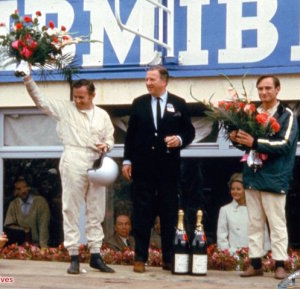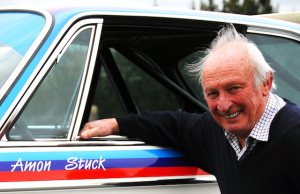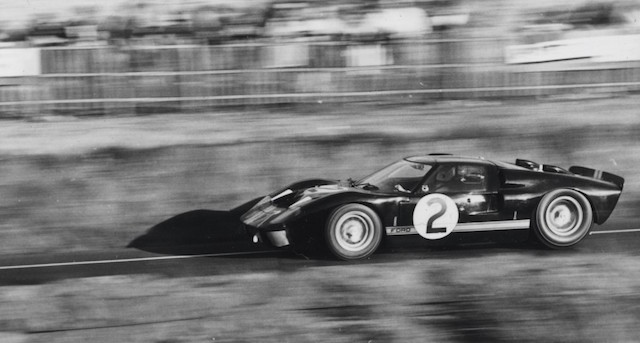
The new Ford GT unveiled at the Detroit motor show is set to enter production next year to celebrate the 50th anniversary of Ford’s famous 1-2-3 finish at the 1966 24 Hours of Le Mans, a race that starred New Zealand’s ‘Three Musketeers’ – Bruce McLaren, Chris Amon and Denny Hulme.

The new Ford supercar (above) takes its cue from the GT40 race car that filled the first three places in 1966, the first all-American car to win the French classic. The first two cars across the line raced for the Shelby-American team, managed by Carroll Shelby, a motorsport household name. The third car was another American team.
At the wheel of the winning GT40 were McLaren and Amon in car No. 2. Ford chairman and CEO Henry Ford II joined them on the podium. Hulme and Englishman Ken Miles piloted the second-placed car, No. 1, and Americans Ron Bucknum and Dick Hutcherson the third, No.5. Of the six drivers that day, Amon is the only survivor.
The GT concept picks up where the last one left off around a decade ago. It takes its cues from the GT40 of the 1960s but in a more modern form. The original had a naturally aspirated 7.0-litre V8 engine and the GT of 10 years ago used a supercharged 5.4-litre V8.
The latest GT runs a mid-mounted 3.5-litre twin-turbocharged Ecoboost V6 that generates “more than 600 horsepower” to the rear wheels, says Ford. That’s around 450kW, considerably more output than the 1966 GT40. “I can’t remember how much horsepower we had at Le Mans,” said Amon from his home near Taupo. “It was probably around 400.”

Ford is keeping the GT’s power and performance figures to itself until nearer the launch next year, although it admits the engine – derived from its Daytona Prototype unit and mated to a seven-speed dual-clutch transmission – is its most powerful production EcoBoost ever.
“The EcoBoost V6 in the GT features a wide powerband with impressive time-to-torque characteristics,” says Ford. “The engine demonstrates remarkable efficiency – a key attribute of its endurance racing-derived powertrain, where exceptional performance combined with efficiency is a critical competitive advantage.”
Stopping the GT are carbon-ceramic brakes housed within 20-inch wheels wearing Michelin Pilot Super Sport Cup 2 rubber. There is plenty of carbon elsewhere – in the tub and other body panels. “Carbon fibre is one of the world’s strongest materials for its mass – enabling an ultra-stiff foundation for chassis components, while creating a lighter overall package for increased dynamic performance and efficiency,” says Ford.

Elsewhere the GT features aerodynamics which minimise drag and enhance downforce. Reinforcing those claims is a deployable rear spoiler with different height and pitch adjustment.
The interior features a large digital instrument cluster, deeply bolstered bucket seats and minimalist centre facia. There is no gearlever – the GT uses steering-wheel mounted controls similar to those found on Ferrari production cars.
Ford says the GT is one of 12 new performance vehicles due before 2020. But it won’t be available in NZ, because production is limited to left-hand-drive versions only.

